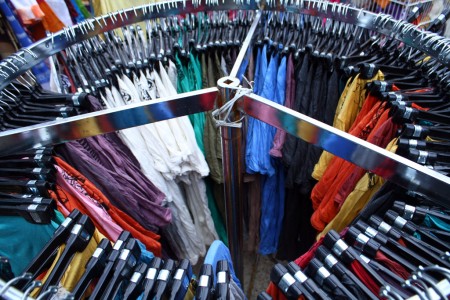
The whole technical and chilling history of atomic weapons is reviewed in Richard Rhodes’ Dark Sun: The Making of the Hydrogen Bomb. Released in 1995, it is based substantially on documents that became available after the end of the Cold War, documenting the development of nuclear and thermonuclear bombs in the United States and Soviet Union, as well as delving into issues of international politics, espionage, and delivery systems.
Most people are likely to find some aspects of the book tedious, while others are fascinating. For instance, I noted all the descriptions of design details of nuclear and thermonuclear issues with interest, but found a lot of the minute descriptions of espionage activities tedious (especially descriptions of nearly every meeting between the atomic spies and their contacts). That said, the book will certainly offer good rewards to anyone with an interest in some aspect of nuclear weapons or the Cold War.
The last few pages really ought to be read by everyone. They document the shocking behaviour of Curtis LeMay and the Strategic Air Command (SAC) in the period prior to the Cuban Missile Crisis, as well as during it. At the time, LeMay and some of his commanders could use nuclear weapons without presidential authority; they were also obsessed with striking first, and generally convinced that war with Russia was inevitable. Perhaps the most shocking actions detailed are LeMay’s strategy of flying nuclear-capable bombers over targets like Vladivostok, in the Soviet Union. They were running drills and taking photos, but it looked to the Russians exactly like an atomic attack. I don’t think Rhodes is wrong to suggest that, had the Soviets done something similar in America, the SAC would have launched an all-out attack against them. Rhodes marshals compelling evidence that LeMay did, at times, seek to provoke a nuclear war through initiatives like these flights and the provocative American ballistic missile test undertaken during the Cuban Missile Crisis.
The book’s closing also laments the enormous amounts of sacrifice made to build up these massive, threatening stocks of weapons. The Oak Ridge and Hanford complexes, producing fissile materials, used more energy than the Tennessee Valley Authority, Hoover, Grand Coulee, and Bonneville dams could produce together. One year of expanding the facilities required 11% of US nickel production and 34% of the output of stainless steel. All told, Rhodes estimates that the arms race cost America over $4 trillion, which could have otherwise been put to productive uses. On the Soviet side, the story is far more appalling: with thousands of slaves being terrorized and irradiated in the drive to match the American weapons complex. The irony is that, while generals and arms manufacturers clamoured for ever-more warheads, politicians on both sides of the Iron Curtain had already come to understand that the weapons could never be used. Indeed, Rhodes’ account provides a nice counter-argument to the view that all politicians are short-sighted and lacking in wisdom.
All told, Rhodes’ account is an excellent one: historically rigorous, but alive to the human issues raised inevitably by the subject matter. It’s a book that is deeply relevant in a world where US-Russian tensions are growing, weapons are proliferating, and a terrifying number of bombs are still deployed on 15-minute hair-trigger alerts.








